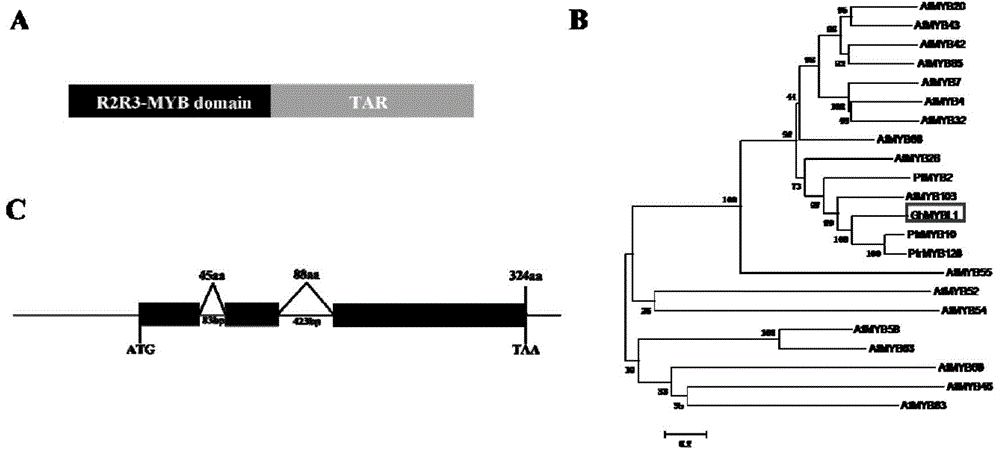Cotton fiber specific MYBL1 gene
A gene and gene sequence technology, applied in the field of cotton fiber quality improvement, can solve problems such as the inability to use high value-added and high-quality textile products to produce raw materials and poor cotton fiber quality
- Summary
- Abstract
- Description
- Claims
- Application Information
AI Technical Summary
Problems solved by technology
Method used
Image
Examples
Embodiment Construction
[0040] 1. Genomic DNA sequence and cDNA isolation and cloning of cotton GhMYBL1 gene and promoter
[0041] A full-length cDNA of a new MYB family gene was isolated from a cotton fiber cDNA library (according to Li XB et al., 2002, Molecular characterization of the cotton GhTUB1gene that is preferentially expressed in fiber.Plant Physiol 130:666-674) The sequence, as shown in SEQ.ID.No.2, is named GhMYBL1. The amino acid sequence of the encoded protein is shown in SEQ.ID.No.3. In order to obtain the genomic DNA sequence of the GhMYBL1 gene, design and synthesize primers at both ends of the open reading frame (ORF) according to the above cDNA sequence, and use cotton genomic DNA as a template, at 94 ° C for 5 min, 1 cycle; at 94 ° C for 1 min, 58 1 min at °C, 2 min at 72 °C, 32 cycles; finally, a 10 min extension at 72 °C was amplified to obtain a DNA fragment of about 1.5 kb (the sequence of the gene coding region, excluding the promoter sequence). This DNA fragment was inser...
PUM
 Login to View More
Login to View More Abstract
Description
Claims
Application Information
 Login to View More
Login to View More - R&D
- Intellectual Property
- Life Sciences
- Materials
- Tech Scout
- Unparalleled Data Quality
- Higher Quality Content
- 60% Fewer Hallucinations
Browse by: Latest US Patents, China's latest patents, Technical Efficacy Thesaurus, Application Domain, Technology Topic, Popular Technical Reports.
© 2025 PatSnap. All rights reserved.Legal|Privacy policy|Modern Slavery Act Transparency Statement|Sitemap|About US| Contact US: help@patsnap.com



